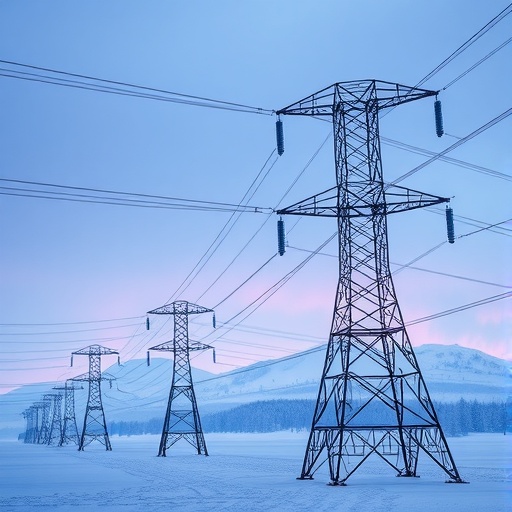In recent years, extreme weather events such as hurricanes, winter storms, and tornadoes have emerged as predominant catalysts behind widespread electric power outages, inflicting billions of dollars in economic damage. As climate change intensifies the frequency and severity of these phenomena, understanding their interplay with power grid vulnerabilities becomes imperative. A cutting-edge study spearheaded by a consortium of leading research institutions, including Carnegie Mellon University and Argonne National Laboratory, has taken significant strides in demystifying the factors underlying prolonged and large-scale power disruptions along the U.S. East Coast. This investigation leverages advanced data analytics on customer-level power outage records alongside granular weather data, revealing critical insights into grid resilience.
At the core of this research lies a novel spatio-temporal modeling framework, which synthesizes quarter-hourly outage data with synchronous meteorological variables across several states – Georgia, Massachusetts, North Carolina, and South Carolina. The model operationalizes grid resilience as two interdependent dimensions: infrastructural resistance to weather-induced stress and operational recoverability following damage. By quantifying these aspects, the researchers move beyond traditional static fault analyses, instead capturing dynamic, nonlinear interactions between weather conditions and grid vulnerabilities over time and geography.
A pivotal revelation from the model is that local outages triggered by extreme weather exhibit sharp nonlinearity relative to cumulative weather impacts. As these localized failures cascade through crucial nodes in the power network—identified by their planning weaknesses, insufficient maintenance, and criticality—the disruptions amplify, morphing into extensive, enduring blackouts that cripple the entire system. This phenomenon emphasizes the concept of “critical nodes,” functioning as pivotal arteries where failure rapidly propagates across the grid, underscoring the importance of targeted interventions.
The study’s simulations illustrate that isolating these critical nodes and fortifying vulnerable components against transient faults could substantially mitigate customer outages—achieving reductions exceeding 45%. These operational strategies offer a compelling blueprint for utilities seeking to bolster resilience amidst escalating climate hazards. The findings also spotlight stark disparities between urban and rural grid robustness. Metropolitan and economically robust areas generally experience lower outage rates, attributed primarily to reduced vegetation interference, extensive deployment of underground or steel-supported lines, and readily available repair resources. These factors collectively enhance both the resistance and adaptability of urban energy infrastructure.
Conversely, rural regions, particularly those with complex terrains such as mountains, dense forests, and expansive river systems, face substantial logistical challenges in fault localization and system restoration, prolonging outage durations. Additionally, economically disadvantaged rural areas often lack the capital and institutional bandwidth to upkeep or modernize power infrastructure. Consequently, these vulnerable zones bear disproportionate brunt of weather-induced outages, highlighting systemic inequalities in grid resilience.
Intriguingly, outage propagation patterns align closely with power flow directions, pointing to generation hubs or dense transmission networks such as substations acting as epicenters for blackout spread. These hubs are typically located in mid-sized urban centers that serve as logistical nexuses for power distribution rather than primary load centers. Understanding this directional contagion of failures offers practical insights into how grid topology influences vulnerability and recovery dynamics.
The study also advocates for a paradigm shift towards enhancing the operational flexibility and decentralization of power networks. Experts suggest that reducing interdependencies within the grid, through embracing diversified generation sources distributed across various locations and adopting versatile operational schemes, can significantly bolster resilience. Such transformations would enable localized adaptation, isolating faults before they cascade system-wide, while fostering rapid restoration capabilities.
Another salient technical observation relates to infrastructure design and vegetation management. Urban grids benefit from less overhead wiring and more steel and underground cables, which inherently resist storm damage better than traditional wooden poles and aerial lines predominant in rural areas. Augmenting vegetation management practices in vulnerable areas could thus serve as a cost-effective resilience measure by decreasing the likelihood of transient faults due to fallen branches or debris.
The complex interplay of climate, terrain, infrastructure design, and operational practices revealed underscores the necessity of data-driven, system-level resilience assessments. Conventional approaches focusing only on component-level reliability fail to capture cascading nonlinearities and emergent vulnerabilities. By integrating large-scale granular data with sophisticated modeling, this study provides utilities and regulators with a powerful decision-making tool to prioritize investments and optimize emergency response strategies.
Importantly, the research responds to regulatory calls post-2000s—after massive losses from extreme weather—to systematically evaluate and enhance grid resilience. However, previous efforts struggled with confounding variables and lack of comprehensive data granularity. This study’s methodology overcomes those hurdles by coupling high-frequency outage and weather observations with network topology, enabling precise attribution of failure causes and propagation paths.
In closing, the implications of this research extend beyond technical innovation; they highlight a pathway toward equitable and sustainable energy infrastructure in an era of intensifying climatic volatility. Public and private stakeholders can apply these insights to reinforce critical nodes, optimize maintenance practices, and rethink grid design with resilience as a guiding principle. Moreover, embracing diversified, flexible energy resources further empowers the grid to withstand and swiftly recover from weather disruptions, safeguarding societal functions reliant on continuous electricity supply.
The study exemplifies how next-generation data science and interdisciplinary collaboration are transforming our understanding of complex energy systems. As extreme weather threats continue to mount, such advancements will be essential in steering the electric grid toward a more resilient and adaptive future.
Subject of Research: Quantifying and modeling power grid resilience against extreme weather using large-scale customer outage and weather data.
Article Title: Quantifying Grid Resilience Against Extreme Weather Using Large-Scale Customer Power Outage Data
News Publication Date: 18-Sep-2025
Web References: http://dx.doi.org/10.1287/ijds.2023.0017
Keywords: Power systems; Power plants; Industrial sectors; Energy infrastructure; Energy resources; Electrical power; Industrial plants; Power industry; Power distribution; Meteorology; Extreme weather events; Storms; Disaster management




